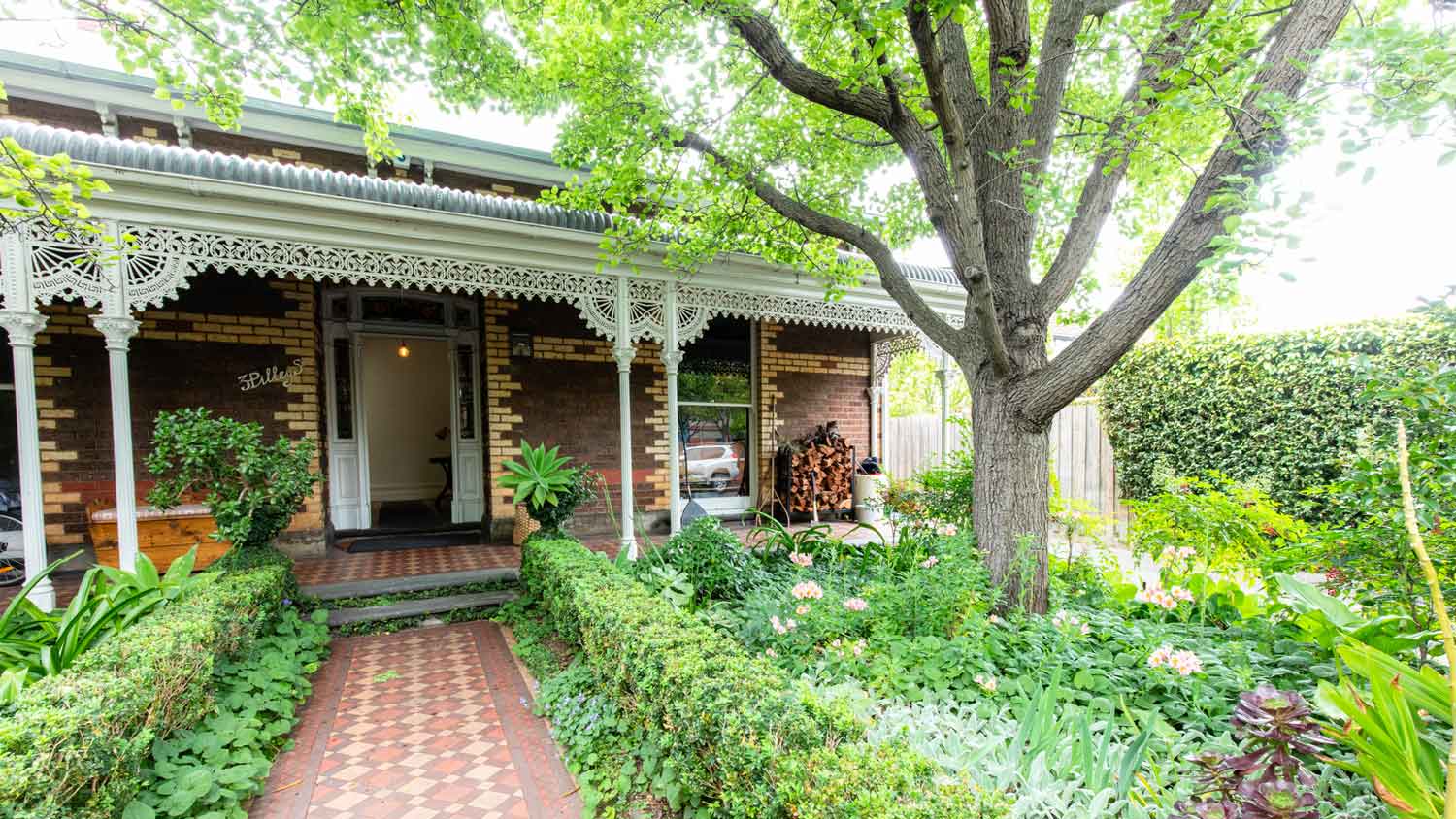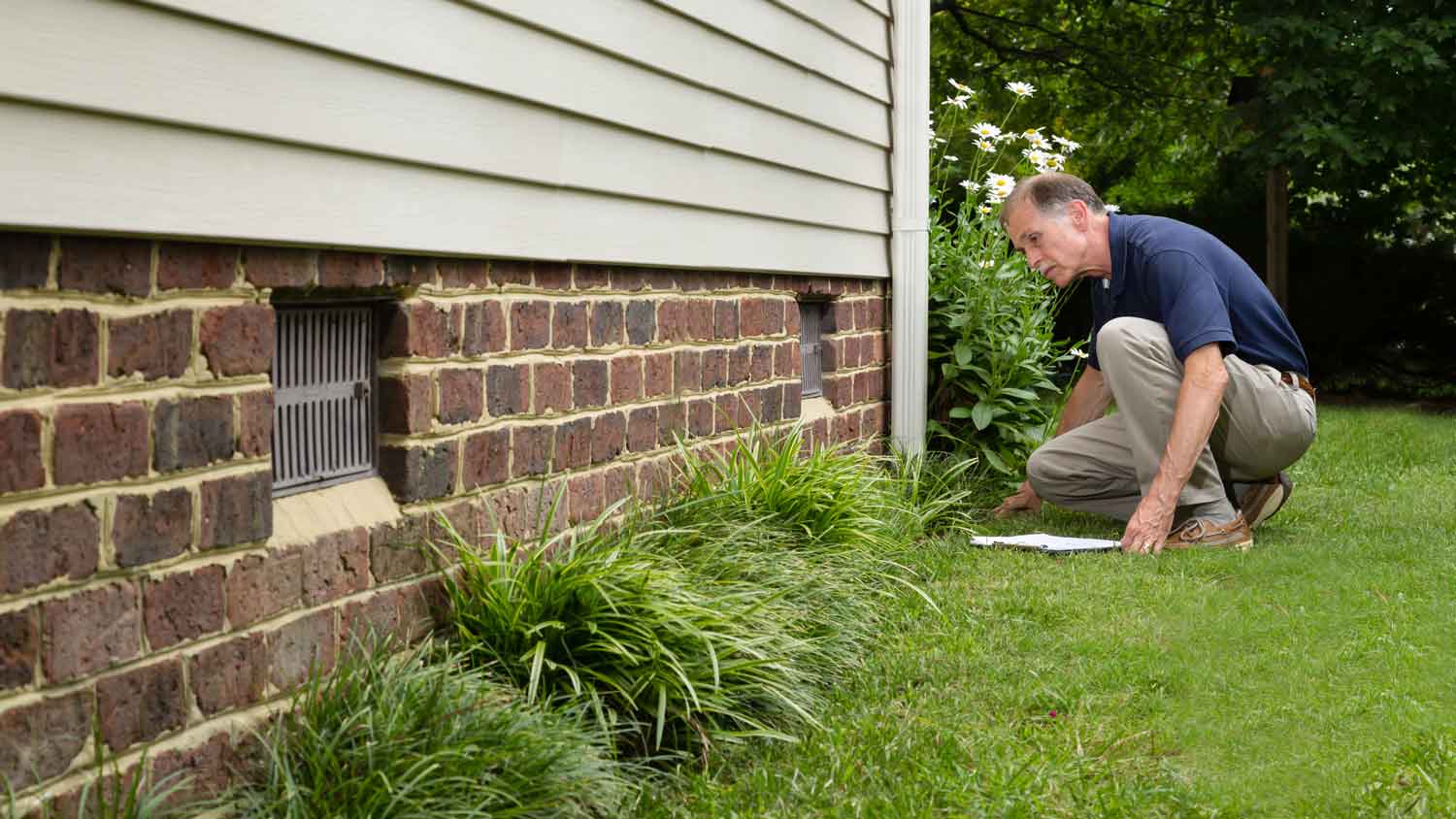Foundation Problems vs. Settling: Easy Ways to Tell the Difference
Settling is perfectly normal but is often confused with more serious structural issues


All foundations settle and develop small hairline cracks.
Foundation cracks are an issue if they’re wide or let water in.
Settlement cracks don’t require repair, but structural damage always does.
Your home’s foundation is under immense stress, so it’s important to identify issues and get professional solutions immediately. While foundations crack and shift due to normal settlement, it’s very easy for untrained homeowners to confuse settlement with serious issues. In this guide, we’ll discuss the differences between foundation problems versus settling so that you can identify both and get the appropriate repair underway.
House Settling vs. Foundation Problems: What’s the Difference?
Foundation settling refers to minor movements of your home’s foundation, usually downward into the soil within the first few years of construction. Settling puts some added stress on the concrete, but not enough where it compromises the structure's integrity.
Foundation problems, on the other hand, can be much more severe, leading to foundation instability, larger cracks in the foundation, and related issues, like water intrusion, pest infestation, foundation sinking, and more.
| Foundation Settling | Foundation Problems |
|---|---|
| No loss of structural integrity | Structural damage is possible |
| Normal and expected | Arises because of an unexpected issue |
| Occurs within first few years of construction | Can happen at any time |
| Repairs often not required | Stabilization or other repairs necessary |
| Symptoms include hairline cracks in foundation | Symptoms include wide cracks, sinking, water intrusion, and more |
Settling vs. Foundation Problems: Differences in Symptoms

One of the most important differences between normal foundation settlement and more severe foundation problems is in the symptoms.
Symptoms of Foundation Settling
All foundations settle and crack, but the soil movement that causes the foundation cracks to form is minor, leading to hairline cracks forming on the slab or the foundation walls if you have a crawl space or basement. The cracks typically develop within a few years of construction and then stop growing and widening.
Hairline cracks are less than ⅛-inch wide. Neither side of the crack rises above the other, and the crack doesn’t usually span from slab to wall or between walls. Sometimes, you might see a thin hairline crack on your concrete block wall in the shape of a stair step. This symptom could be from normal settlement if the crack is thin and doesn’t continue to grow over time, but it could also be a sign of structural damage.
Hairline cracks from foundation settlement rarely let visible water into your under-home area. If you see moisture along the crack, it’s best to seal it with a foundation crack sealant or epoxy.
Symptoms of Foundation Problems
Foundation problems often come with wider foundation cracks, usually more than ⅛ inch. If your foundation cracks continue to grow for years or develop long after construction, they’re more likely indicative of foundation damage rather than settlement.
There are a few types of foundation cracks that are a cause for concern and are rarely indicative of settlement:
Horizontal cracks on the foundation walls
Diagonal cracks on the foundation walls
Stair step cracks on the walls that round the corner
Any cracks that spread across room corners or from the slab to the concrete wall
You’re also more likely to see visible water coming through structural cracks. Since moisture intrusion is more of an issue, some other signs of foundation issues related to moisture accumulation include pest infestation, heavy or moist air in your under home area, and increased energy bills due to interior moisture.
Foundation Problems vs. Settling: Differences in Underlying Causes

The symptoms of foundation problems and settlement vary because the underlying causes differ.
Causes of Foundation Settlement
Foundation settlement occurs because the weight of your foundation and the structure above continue to pressure the soil underneath and eventually compact it, causing the foundation to shift downward. The downward movement is minimal and usually happens uniformly under the home, so the foundation maintains even support.
Cause of Foundation Problems
There are many more underlying causes of foundation problems.
Uneven settlement: If what would otherwise be normal settlement occurs unevenly under your home due to differences in soil moisture content, it could result in structural damage.
Hydrostatic pressure: This puts intense pressure on your foundation walls and can bow them inward. It results from the soil around your foundation swelling in the presence of moisture.
Frost heave: Frost heave is when the water in the soil under your foundation freezes, putting damaging, upward pressure on the slab.
Sinkholes: Sinkholes can lead to unsupported sections of your foundation and rapid foundation sinking.
Moisture issues: Water intrusion can be an issue if your property has poor drainage. Moisture causes many problems for your foundation, including leaking and weakening of the concrete.
Poor construction: Home builders need to compact soil before pouring the foundation. If they don’t, the ground can settle unevenly, causing a loss of structural integrity.
Tree roots: Tree roots growing near your foundation can push the concrete inward to the point of cracking and structural damage.
Earthquakes: Earthquakes can cause sudden shifting of soil that damages your foundation, necessitating immediate structural repair.
Prevention Differences

Preventing foundation settlement is usually not possible, although compacting the soil under where the foundation will sit is a good way to minimize soil movement after construction and avoid damage.
Preventing foundation problems can take many forms, depending on the kind of damage you’re looking to avoid:
| Foundation Problem | Prevention Method |
|---|---|
| Frost Heave | Drainage system or foundation insulation |
| Hydrostatic Pressure | Drainage system or soil gradation |
| Sinkholes | Drainage system |
| Tree Roots | Planting trees 10+ feet away from home |
| Uneven Settlement | Proper construction or drainage system |
| Water Intrusion | Drainage system |
How to Fix Foundation Problems Vs. Settling Cracks
Foundation problems and settlement differ in how you should respond to and fix them as well.
In many cases, fixing foundation cracks from normal settlement isn’t necessary unless moisture or radon are issues on your property. You can seal them or have a foundation repair contractor fill them for you. Aside from sealant, settling cracks don’t need attention unless they grow or widen.
Foundation repair for more severe issues depends on the underlying cause and the extent of the damage. An expert might use a few different foundation repair methods to stabilize your foundation and prevent further movement.
Underpinning. Foundation underpinning is the placement of supportive piers beneath the foundation. The piers sink to stable soil for support to prevent the foundation from sinking.
Foundation wall support. Horizontal wall cracks from hydrostatic pressure might require bracing using carbon fiber strips to prevent additional bowing.
Drainage system. A drainage system, like a French drain, can move excess runoff away from your foundation to prevent moisture and water intrusion issues. This can also solve problems with expansive soil.
Mudjacking. Mudjacking, slab jacking, and poly jacking refer to when a contractor pumps a supportive, semi-fluid material under a slab to lift it back into place. When it dries, it provides even support for the foundation.
Crack sealant. Contractors sometimes use special epoxy to seal structural cracks and stabilize the damaged area to prevent further damage.
How to Tell the Difference Between Foundation Settling and Structural Damage

The easiest way to tell the difference between foundation settlement and foundation problems is to look at what’s occurring and where. If you notice thin cracks on your foundation that don’t span between walls or between the concrete floor and the walls, especially if they aren’t growing or widening with time, then they’re likely from regular settlement.
If foundation cracks widen to ⅛-inch or more, appear horizontally or diagonally on the foundation wall, appear in a stair-step formation on your concrete block wall, or stretch around corners or from the slab to a wall, you more likely have a serious foundation issue. Additionally, if you notice irregularities on your main floor, you probably have a foundation issue rather than settlement. Some common indications of an issue—and signs that you might want to walk away from the foundation problems if you’re buying a home—include the following:
Doors and windows that stick
Uneven, sloping, or bouncy floors
Cabinets and counters pulling away from the walls
Wavy or uneven roof
Cracks in drywall around wall openings
Nails pushing out of your drywall
If you have any doubt about whether symptoms in your home are from normal settling or a foundation issue, call a foundation repair company near you right away to get the problem addressed.
Most of the time, normal foundation settling will present as thin cracks in the foundation and minor creaks in the floorboards. In contrast, you can identify foundation issues by wide or uneven foundation cracks, horizontal or step-shaped gaps on the foundation wall, or cracks that go around corners of your foundation. Foundation problems can also cause changes in your living area, like increased humidity, uneven or sloping floors, nail pops in drywall, countertops pulling away from the wall, and windows and doors getting stuck. When in doubt, call in a professional to identify the underlying cause.
No, house settling is normal as your home’s foundation settles into the soil below and as the framing of your home shifts as it expands and contracts with changes in temperature and moisture. However, if you get to the point where your doors and windows aren’t opening easily, your floors are uneven, or you can visibly see that your roof line is wavy or uneven, you are more likely to have foundation issues.
Yes, houses can still settle after 50 years, although most of the usual settling will occur in the first few years after construction. Older homes naturally creak more as the framing expands and contracts, but if you start to notice sloping floors, new cracks forming in your foundation, or other new and sudden problems inside your home, you should call a professional for a foundation inspection.














